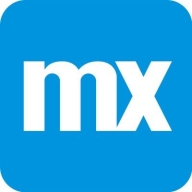

Mendix and FlutterFlow are both popular choices for low-code and no-code application development. Mendix is favored for its robust enterprise capabilities, while FlutterFlow is noted for its speed and ease of use for smaller projects.
Features: Mendix users appreciate its extensive integration capabilities, strong support for complex workflows, and comprehensive feature set, making it a strong choice for large-scale enterprise solutions. FlutterFlow users highlight its rapid prototyping, ease of building visually appealing app designs, and simplicity for quicker development cycles.
Room for Improvement: Mendix users often mention the steep learning curve, need for more intuitive debugging tools, and improvements in user interface design. FlutterFlow users point out limitations in scalability, occasional performance issues in larger applications, and need for enhanced collaboration features.
Ease of Deployment and Customer Service: Mendix's deployment process is more complex but highly configurable, catering to enterprise IT environments. Customer service is generally rated as responsive and knowledgeable. FlutterFlow offers a more straightforward, faster deployment process, suitable for smaller teams, with customer service praised for its accessibility but lacking deep technical support.
Pricing and ROI: Mendix has higher setup costs but offers substantial ROI for complex, long-term projects. FlutterFlow's lower setup costs are attractive for startups and smaller projects, providing quick ROI for rapid application development.


FlutterFlow is used for developing mobile applications quickly and efficiently, ideal for building prototypes, MVPs, and full-fledged applications without extensive coding experience. It supports cross-platform development, enabling simultaneous deployment on Android and iOS.
FlutterFlow's visual development tools and integrations streamline the app creation process, making it perfect for startups and developers looking to launch their apps faster. Its comprehensive drag-and-drop interface, pre-built components, and templates facilitate rapid app development. Integration with Firebase simplifies backend connections, and the robust documentation and tutorials support quick learning. Real-time collaboration features improve teamwork, enhancing the development experience.
What are the most important features of FlutterFlow?FlutterFlow can be particularly useful in industries that require fast app iterations, such as startups and tech companies. Its support for cross-platform development is beneficial for companies targeting both Android and iOS markets. The ease of use and comprehensive support make it an appealing choice for businesses looking to launch functional apps quickly, without extensive coding knowledge. Though improvements in stability, performance, customization, debugging, and customer support are needed, FlutterFlow's overall features present a strong front for efficient app development.
Mendix is a low-code application development platform that helps your organization accelerate its application development lifecycle. The solution is designed to enable you to create software faster by abstracting and automating the development process for better business outcomes at speed and scale. Mendix has many key capabilities, including a tailored IDE for every developer, built-in collaboration tools for team development, feedback management, agile project management, the ability to build a truly responsive design across devices, and much more.
Mendix Features
Mendix has many valuable key features. Some of the most useful ones include:
Mendix Benefits
There are many benefits to implementing Mendix. Some of the biggest advantages the solution offers include:
Reviews from Real Users
Below are some reviews and helpful feedback written by PeerSpot users currently using the Mendix solution.
PeerSpot user Somnath G., Solution Architect and LowCode Practice Lead at a tech services company, says, "What I found most valuable in Mendix is that it's very much suitable for mobile apps such as native Android or IOS supported mobile apps. The multiple features of the platform are very, very attractive and very popular. Mendix has technical features such as microflows and nanoflows. You can also access data models in the platform. These are the features that are very, very strong in Mendix. I got my hands dirty on other low-code platforms, but I have not seen such strong features in them compared to the microflows, nanoflows, and data model access that are in Mendix, including creating and integration. The platform has out-of-the-box adapters or out-of-the-box-connectors that you can integrate with different interface applications such as SAP, Salesforce, Oracle EBS, etc."
Sameer V., Consulting Manager at Deloitte, mentions, “Their native mobile capability is very good. In general, the way they launch the product has been great. Their product launching strategy is far better than any other platform. I work in OutSystems and Mendix. They tend to be more on the legacy side, OutSystems. With this solution, the product launching strategy is very, very agile. I really like when they roll out their updates, which are very, very frequent.”
Robert B., Solutions Architect at a computer software company, explains, The solution is just very quick and responsive. The initial setup is very straightforward, and those implementing the product do not have to be very technologically advanced in order to manage the process.”
We monitor all Low-Code Development Platforms reviews to prevent fraudulent reviews and keep review quality high. We do not post reviews by company employees or direct competitors. We validate each review for authenticity via cross-reference with LinkedIn, and personal follow-up with the reviewer when necessary.